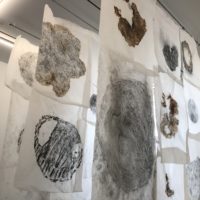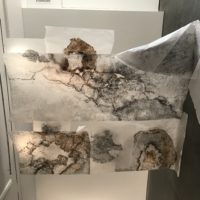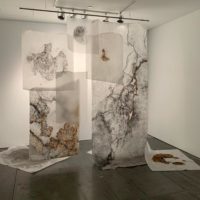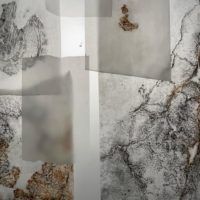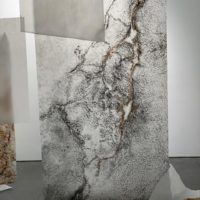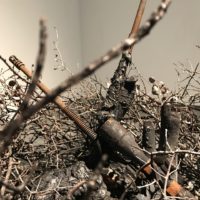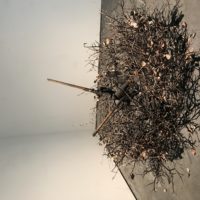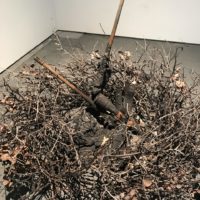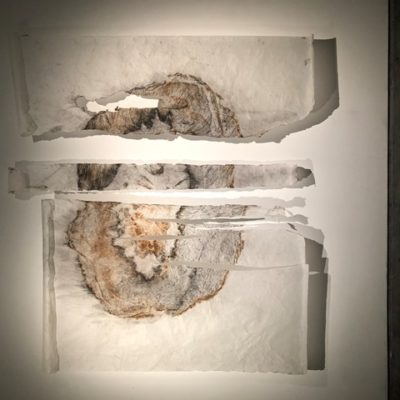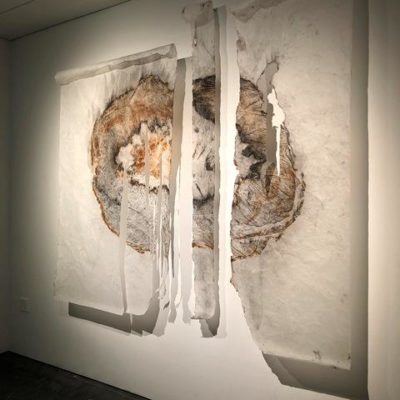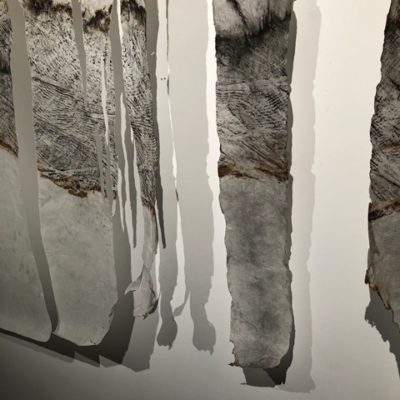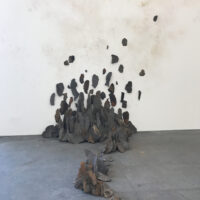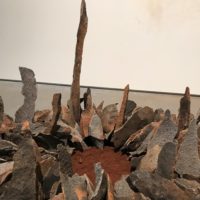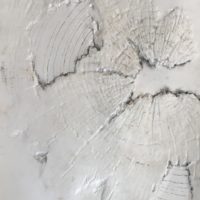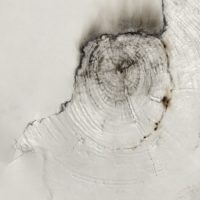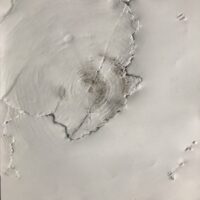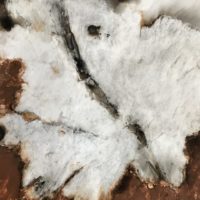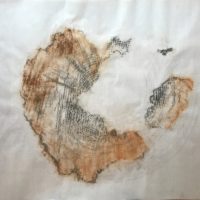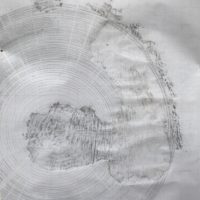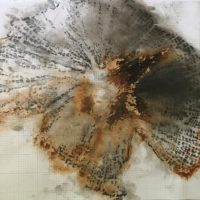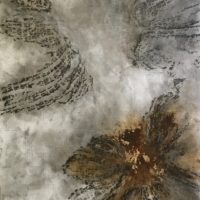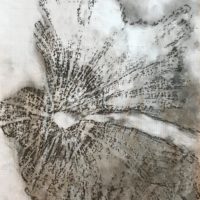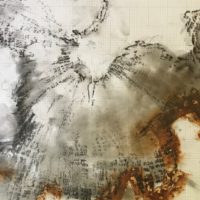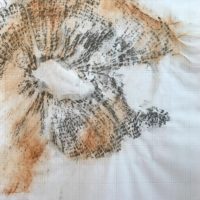Camp Fire
The erasure of my childhood hometown by the 2018 Camp Fire in Paradise, California, redefined my art practice.
Previously, my artistic thesis linked the decline of native California tree species to human influences. I am now using the Camp Fire as a lens through which to consider the intertwinement of people and the environment in the face of anthropogenic climate change.
Much of this work is commemorative and site specific, pairing charred natural and man-made materials gleaned from within the burn scar with forms and methods that evoke funerary and memorialization practices. I use the interplay of substance and absence to convey the fragility exposed when fine natural balances are disrupted. The inherent immobility of materials – the detritus of combustion, soil, fragments of boulders that splintered in the intense heat, vegetation, personal effects – reflects that the consequences of global warming most affect the vulnerable among us: those without the means to move on.
Two years after the Camp Fire, I began interviewing survivors. All described profoundly changed relationships with the ideas of security and control. These personal reorientations, considered within the larger context of climate change-driven habitat loss, inform my work. Using material, political, and social remnants of the fire and its regional aftermath, I’ve been making illusory shelters that acknowledge escalating exposures as refuge declines on our warming planet.
Inscription Series
Installation pieces, approximately 12′ x 10,’ graphite, charcoal, ash, and mud on trace paper suspended with electrical clips, filament, aluminum wire, and galvanized steel pipes.
In Defensible Space
Installation, 29″ x 44,” burnt rifles and chaparral branches
Interrupted Cedar
8′ x 9’6″ Graphite, charcoal, ash, and mud on trace paper
Mineral Artifact Series
Boulder fragments, mud, ash
Phase 2 Cleanup Complete
Mud and ash
Works on Paper
Charcoal, ash, graphite, mud on gridded various papers

